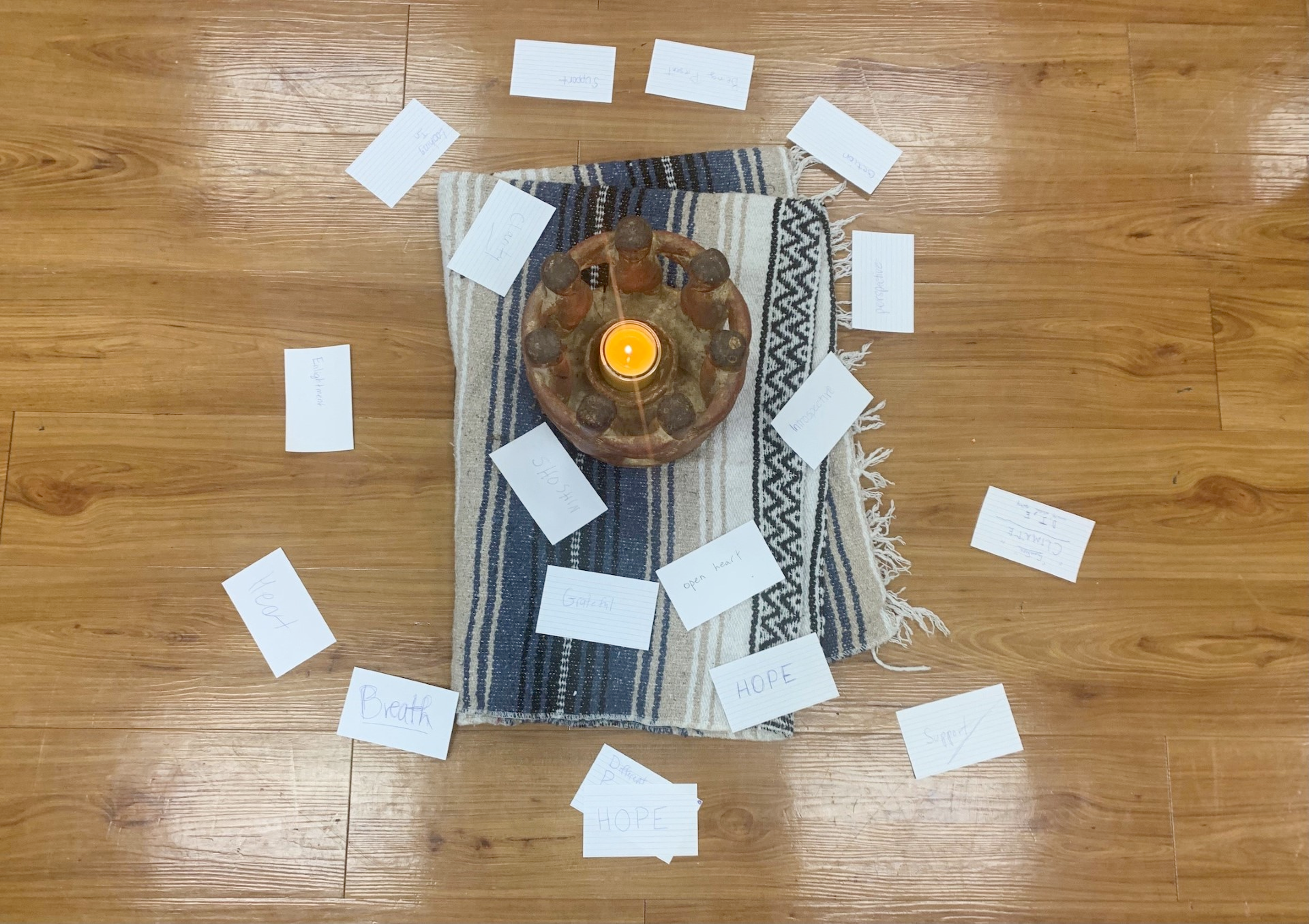
Lida Shepherd/AFSC
The work of AFSC in West Virginia has long revolved around economic justice, but over time we’ve gotten more involved in issues related to the criminal legal system, including reentry and recovery.
It wasn’t much of a stretch: These issues overwhelmingly impact low-income people and divert public resources from meeting human needs.
In addition to policy work, we were interested in learning about alternatives to the punishment model to help prevent people from getting caught up in the system to start with. That naturally led us to explore restorative justice and circle practices.
The talking circle is different from your typical hierarchical meeting space. It is a structured dialogue process where the group uses a talking piece. Only the person holding the talking piece may speak, while others in the group listen to them. The object is passed around the circle, which encourages equal participation from all. This helps create a safe space where participants can listen, reflect, and share more deeply than in typical meeting settings.
Examples of talking circles include celebration circles, dialogue circles, community-building circles, and healing/grief or loss circles. Problem-solving circles, which require more intensive training, include support circles, reintegration circles, decision-making circles, conflict circles, or harm circles.
“The Circle can hold pain, joy, despair, hope, anger, love, fear and paradox,” writes Kay Pranis, who has written many books based on her deep knowledge of facilitating a circle, known as circle keeping. “In the Circle each person has the opportunity to speak their truth but cannot assume the truth for anyone else.”
Recently, we spoke with one community advocate, C. Mitzi Sinnott, about her experience with talking circles in Huntington, West Virginia. It started at the end of 2022, when Mitzi attended a community meeting that was supposed to unite local leaders. Instead, she left feeling angry and deflated. The meeting felt stifled, stilted, and unsatisfying, with some voices dominating the conversation while others were being silenced.
She believed that a big part of the problem was the fact that, “individuals don’t know each other well enough to trust each other to do the kind of re-imagining our city needs for a more equitable, joyous, and creative culture for all.”
That’s when Mitzi decided her community could benefit from an alternative approach to meeting. An approach that could flatten power differences, welcome diverging perspectives, and fortify interpersonal connections.
Mitzi got in touch with AFSC about co-facilitating with her community-building circles. After two community circles together with AFSC staff, she was ready to roll on her own.
Since Mitzi cycled forward with monthly community circles, she has noticed that the circle process has tapped into an unmet need for deeper connection. Different people keep showing up while others step into leadership roles for the circle.
Mitzi has also seen people overcome their skepticism about the need for a talking circle. One of the participants, a former city counselor who remains involved in many aspects of city life, initially said, “I don’t see what this is. Why are we doing this? What’s the agenda?” It made Mitzi have her own doubts.
But then after a few circles, the same person told Mitzi, “You know I didn’t really understand the circle, but now I really like it. I want to be more involved.” To which Mitzi marveled, “Oh, this is how it goes! It’s like starting to garden after living in NYC for 20 years. Seeds have their own timing to become saplings and fruit. I can’t control that, I must simply trust and allow the time it takes. The ‘agenda’ is that we come together and connect. Period. And that is invaluable.”
Given the open nature of the circle process, it’s hard to predict specific outcomes and more about expecting the unexpected. Mitzi said, “It’s not as prominent or cohesive as I had hoped, but I imagine that if I hadn’t instigated (the circle), what we would have lost if we had not.”
Despite there not being a formal agenda for the community circles, Mitzi has already observed how the spirit of what happens in the circle is showing up in some of the newer city initiatives in which she and other participants are involved. “The circles are giving people confidence and peace that only come when one feels safe and acknowledged in the world. Circle does this. It’s the facia that’s holding people together to do better work together. Little light lines connecting people.”